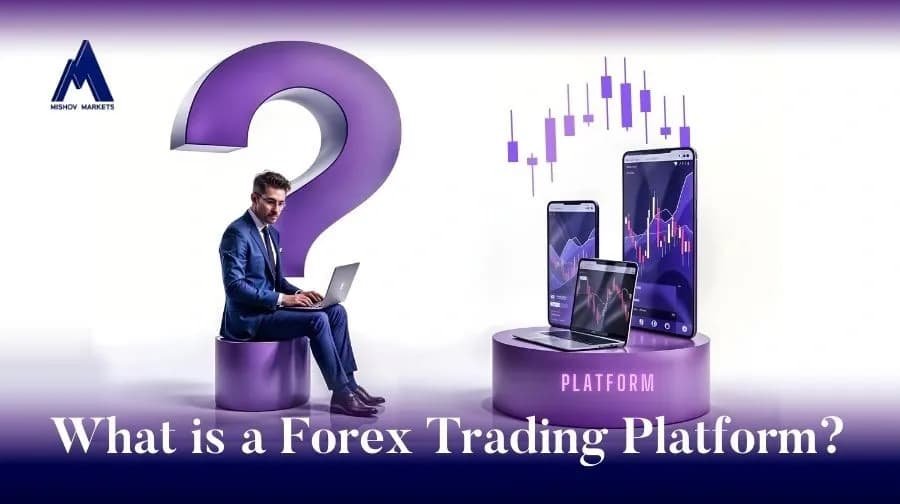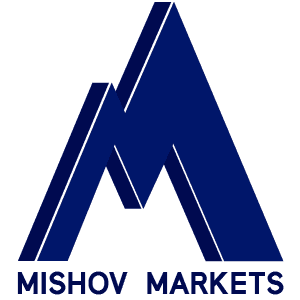What is a Forex Trading Platform

What is a forex trading platform? How many types of platforms are available in the forex market? Well, Forex trading, also known as foreign exchange or FX trading, is one of the largest and most liquid financial markets in the world. In this market, currencies are traded in pairs, such as the EUR/USD, GBP/JPY, and USD/JPY, among others. The vast scale and complexity of forex trading demand a sophisticated infrastructure to facilitate the buying and selling of these currencies. The main component enabling this exchange is the Forex trading platform. But What is the FX platform? how does it work, and how can traders use it to participate in the FX market? In this essay, we will explore these questions, identify the different types of platforms available in the forex market, and provide insights into how they can be accessed through various devices.
What is a Forex Trading Platform?
A Forex trading platform is a software application that allows traders to access the foreign exchange market and execute trades. These platforms provide the tools and services needed to monitor the forex market, analyze currency pairs, place buy and sell orders, and manage trading accounts. In essence, the platform is the intermediary between a trader and the forex market provided by a broker, enabling seamless trade execution and offering real-time data and charting features.
The importance of a forex trading platform shouldn’t be underestimated. Without it, traders wouldn’t be able to engage in currency trading efficiently. The platform connects users to brokers’ liquidity pools, allowing them to take advantage of price movements in the market. Most platforms also provide critical features such as technical analysis tools, news feeds, risk management options, and automated trading systems, making it easier for traders to analyze the market and make informed decisions.
How Does a Forex Trading Platform Work?
At its core, a forex trading platform works by connecting the trader to the forex broker's liquidity providers, which may include large financial institutions, banks, and other establishments. When a trader opens a position on the platform, the platform sends the order to the broker, which in turn executes it in the market. This execution is based on the current market price, and the trader’s position will fluctuate according to the price movements of the selected currency pair.
Forex trading platforms offer various tools to help traders make informed decisions. For example, charts are essential for tracking price movements, while technical indicators help traders identify trends along with potential entry and exit points. Platforms may also offer fundamental analysis tools, such as real-time news feeds, to help traders understand the broader economic factors influencing currency movements.
Many platforms allow demo accounts for beginners to practice trading without using real money. This feature helps traders learn how to navigate the platform, develop strategies, and gain experience in the market without getting exposed to financial risk.
How Do You Use a Forex Trading Platform?
After understanding the meaning of What is FX platform? Now it's time to know how to use it. Using a forex trading platform is relatively straightforward, but success requires a good understanding of the platform’s features and a solid trading strategy. Here’s how you can use a forex trading platform effectively:
-
Choose a Broker and Platform:
The first step is to select a reputable forex broker that offers access to a trading platform. Some brokers offer proprietary platforms, while others provide access to popular third-party platforms like MetaTrader 5 (MT5) or cTrader.
-
Download and Install the Platform:
Most platforms can be downloaded and installed on a computer or mobile device. Many brokers also offer web-based platforms that don’t require installation.
-
Create an Account:
To start trading, you will need to create an account with the broker. This typically involves providing personal information, verifying your identity, and making an initial deposit.
-
Practice with a Demo Account:
Before risking real money, it’s advisable to practice using a demo account. This allows you to familiarize yourself with the platform’s features, order types, and risk management tools without any financial risk.
-
Place Orders:
After practicing, you can start placing live orders. The platform will provide you with tools to enter, modify, or close trades. You can place market orders, limit orders, or stop orders, depending on your trading strategy.
-
Monitor Your Trades:
The forex market is highly dynamic, so monitoring your trades in real-time is essential. Most platforms offer live charts, real-time price data, and trading alerts, which help you stay on top of market movements.
-
Risk Management:
A key feature of most forex platforms is the ability to set stop-loss and take-profit levels to manage risk. You can set these orders automatically, so your position closes once the price reaches the specified level.
Types of Forex Trading Platforms and Apps
Traders must know the different types of platforms available in the forex market and select the one suitable to their needs. These platforms can be categorized based on the device used to access them, such as web-based, mobile (smartphone), and desktop platforms.
1. Web-Based Platforms
Web-based forex trading platforms do not require any software installation. They can be accessed directly through a web browser, which makes them incredibly convenient and accessible from any device with internet connectivity. These platforms typically have a user-friendly interface, offering basic trading tools, charts, and order types.
Advantages:
-
No installation required
-
Accessible from any device with a web browser
-
Can be used on any operating system (Windows, Mac, Linux, etc.)
Examples: Most brokers offer web-based platforms as part of their service, such as the cTrader Web and MetaTrader Web Trader.
2. Mobile Platforms (Apps)
Mobile trading apps allow traders to access the forex market from smartphones and tablets. These apps are designed to be highly portable, allowing traders to monitor and execute trades while on the go. They usually include real-time charts, notifications, and even social trading features, where traders can share ideas and strategies.
Advantages:
-
Convenient for trading on the go
-
Access to real-time data and notifications
-
User-friendly interfaces optimized for mobile devices
Examples: Popular mobile trading apps include the MetaTrader 4 (MT4) app, MetaTrader 5 (MT5) app, and cTrader mobile app.
3. Desktop Platforms
Desktop forex trading platforms offer the most comprehensive and advanced features for traders. These platforms are installed on a computer and are ideal for those who prefer to trade on a larger screen with access to extensive charting tools, technical indicators, and order management options. Desktop platforms are generally favored by professional traders due to their stability and performance.
Advantages:
-
Full-featured with advanced charting and analysis tools
-
Ideal for professional traders
-
Better performance and customization options
Examples: MetaTrader 4 (MT4), MetaTrader 5 (MT5), and cTrader are among the most popular desktop platforms. Mishov Markets also offers a powerful, user-friendly platform designed for traders of all levels, featuring advanced charting tools, fast execution speeds, and access to a wide range of global markets. Join Mishov Markets today and take your trading experience to the next level!
Types of Platforms Available in the Forex Market
Several platforms dominate the Forex market in terms of functionality and user base. Let’s examine the most popular platforms preferred by reputable brokers and used by traders worldwide.
1. MetaTrader 4 (MT4)
MetaTrader 4 is one of the most popular forex trading platforms globally. It is known for its ease of use, stability, and wide range of technical analysis tools. MT4 supports automated trading through Expert Advisors (EAs), which can execute trades based on pre-set parameters. This feature makes it particularly attractive to algorithmic traders.
Key Features:
-
Customizable charts and indicators
-
Expert Advisors (EAs) for automated trading
-
Real-time market data
-
Access to different order types
2. MetaTrader 5 (MT5)
MetaTrader 5 is the successor to MT4, offering additional features like improved charting tools, more timeframes, and support for trading other financial instruments beyond CFDs, such as futures contracts, options, shares, indices, and commodities. While MT4 is still widely used, MT5 is gaining popularity due to its enhanced functionality.
Key Features:
-
Support for multiple asset classes (stocks, commodities, etc.)
-
Additional timeframes and chart types
-
Improved order management tools
-
Advanced back-testing capabilities for automated trading
3. cTrader
cTrader is another popular forex trading platform known for its intuitive interface and advanced charting capabilities. It offers a smooth user experience and a variety of order types. cTrader also supports algorithmic trading with cAlgo, which allows traders to create and implement custom trading robots.
Key Features:
-
Friendly and modern interface
-
High-speed trade execution
-
Advanced charting and technical analysis tools
-
Automated trading with cAlgo








